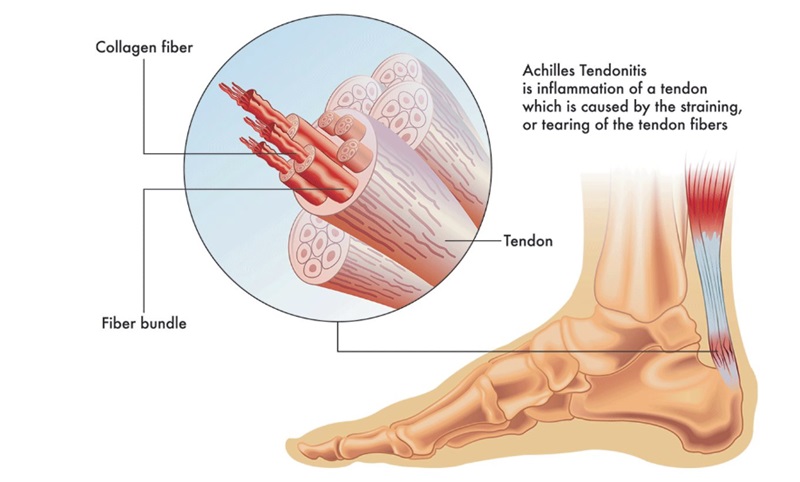Understanding Achilles Tendinitis: Causes, Symptoms, and Diagnosis | Comprehensive Guide-Achilles tendinitis can be a real pain – literally. This article aims to unravel the mysteries surrounding this condition, from its causes and symptoms to diagnosis, treatment options, and preventative measures. Whether you’re an athlete or someone who loves to stay active, knowing about Achilles tendinitis is essential for maintaining your foot health.
Understanding Achilles Tendinitis: Causes, Symptoms, and Diagnosis | Comprehensive Guide

Summary
Achilles tendonitis is a painful condition affecting the Achilles tendon, the cord connecting calf muscles to the heel bone. Excessive walking or running, particularly in athletes, is a common cause. Symptoms include heel pain, swelling, limited foot flexion, and tenderness. Diagnosis involves a physical examination and imaging tests. This article delves into the key aspects of Achilles tendinitis to help you better understand, manage, and prevent it.
Facts About Achilles Tendinitis
- Treatable by a medical professional.
- Typically diagnosed by a medical professional.
- Rarely requires lab tests or imaging.
- Can last several months.
- More common in males and individuals aged 50 and older.
Symptoms – Characteristic and Common
- Heel pain and swelling.
- Thickening of the tendon.
- Limited range of motion during foot flexion.
- Warmth around the heel.
- Tenderness in the affected area.
Causes – Common and Risk Factors
- Common causes: Overuse, sudden exercise intensity increase, improper footwear.
- Rare causes: Fluoroquinolone antibiotics, psoriasis, hypertension.
- Risk factors: Age above 50, male gender, flat feet, obesity, tight calf muscles, bone spurs, worn-out shoes.
Diagnosis – Common Methods
- Physical examination: Tenderness and swelling check.
- X-ray: Rule out other conditions.
- Ultrasound: Observe real-time tendon movement.
- MRI: Assess tendon degeneration and damage severity.
Treatments – Commonly Recommended and in Severe Cases
- Self-care measures.
- Medication (anti-inflammatory drugs).
- Physical therapy (stretching exercises).
- Surgery for severe cases.
Complications
- Without proper treatment, Achilles tendinitis can lead to chronic pain and an increased risk of tendon rupture.
Prevention
- Stretching exercises.
- Gradual exercise intensity increases.
- Proper footwear.
- Regular replacement of worn-out shoes.
- Using supports or cushioning pads.
Questions To Ask Your Doctor
- What is causing my symptoms?
- Do I need surgery?
- What is the recovery time?
- Are there any restrictions to follow?
- Can I participate in sports?
Conclusion
Understanding Achilles tendinitis is crucial for anyone who values an active lifestyle. Recognizing the causes, symptoms, and available treatments empowers individuals to take proactive steps toward prevention. Whether you’re seeking relief from existing symptoms or aiming to safeguard against future issues, knowledge is the first step in maintaining optimal foot health. If you suspect Achilles tendinitis, don’t hesitate to consult with a healthcare professional for personalized guidance tailored to your specific needs.
ALSO READ-Understanding Achalasia: Causes, Symptoms, and Diagnosis | Comprehensive Guide
Disclaimer-For informational purposes only. Consult a medical professional for advice.